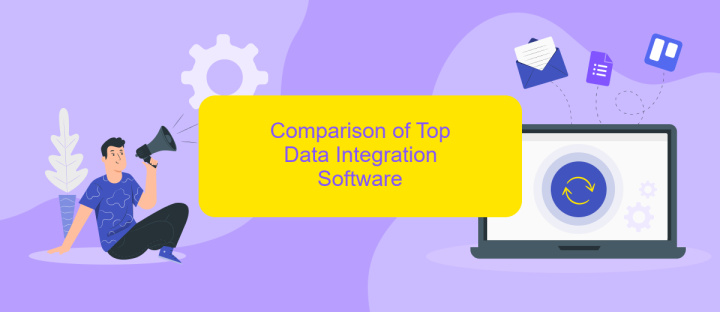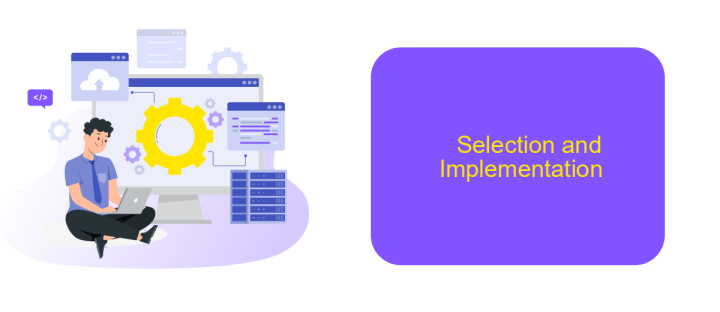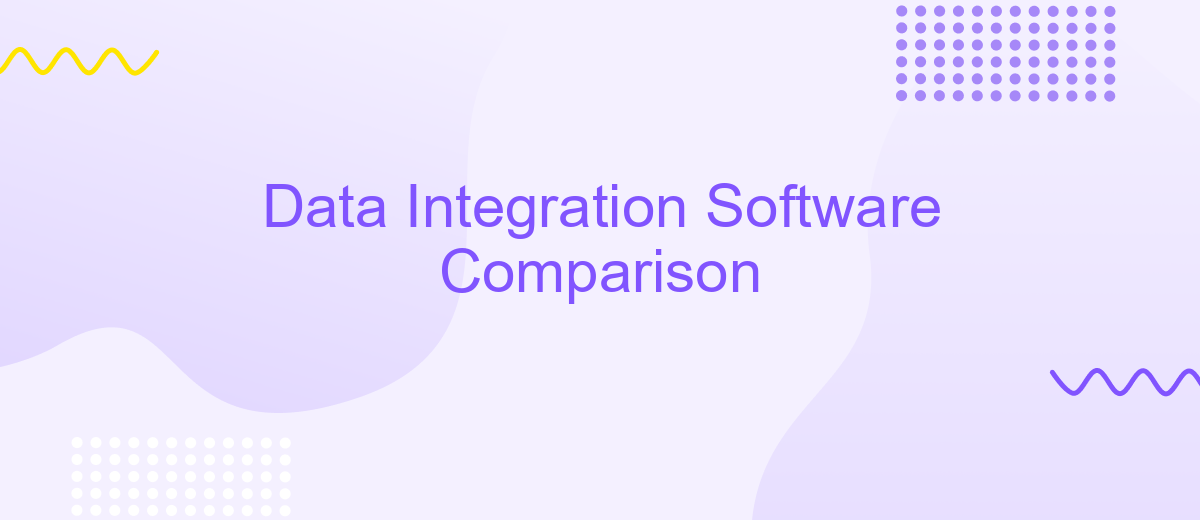Data Integration Software Comparison
In today's data-driven world, businesses rely heavily on seamless data integration to make informed decisions. Choosing the right data integration software is crucial for streamlining operations and ensuring data accuracy. This article provides a comprehensive comparison of leading data integration tools, evaluating their features, performance, and suitability for various business needs, helping you make an informed choice for your organization.
Introduction
Data integration software plays a crucial role in modern businesses, enabling seamless data flow between various systems and applications. This integration is essential for organizations looking to enhance their data management capabilities and improve operational efficiency. With numerous solutions available in the market, choosing the right software can be challenging.
- Ease of use and user-friendly interface
- Compatibility with existing systems
- Scalability to accommodate business growth
- Support and customer service
- Cost-effectiveness
One such tool that stands out in the realm of data integration is ApiX-Drive. This service offers a robust platform for automating data transfers between various applications, making it easier for businesses to manage their data workflows. By leveraging ApiX-Drive, companies can streamline their processes, reduce manual work, and ensure data accuracy across systems.
Key Features to Consider

When evaluating data integration software, it's crucial to consider the ease of use and user interface. A platform with a user-friendly interface allows both technical and non-technical users to set up and manage integrations efficiently. Look for software that offers drag-and-drop functionality and pre-built connectors, as these features significantly reduce the complexity of the integration process.
Another key feature is the range of supported data sources and destinations. The software should be able to connect seamlessly with various databases, cloud services, and applications. Additionally, consider platforms like ApiX-Drive, which offers robust integration capabilities and supports a wide array of data sources. This ensures that your data flows smoothly between different systems, enabling better decision-making and operational efficiency.
Comparison of Top Data Integration Software

When selecting data integration software, it's essential to compare the leading options to find the best fit for your needs. Each tool offers unique features, strengths, and pricing models that can significantly impact your decision.
- Informatica: Known for its powerful ETL capabilities and extensive data management features, Informatica is ideal for large enterprises.
- Talend: Offers open-source and commercial versions, providing flexibility and robust data integration solutions for various business sizes.
- ApiX-Drive: A user-friendly, no-code platform that simplifies the integration process, making it accessible for businesses without extensive technical expertise.
- Microsoft Azure Data Factory: A cloud-based solution that seamlessly integrates with other Microsoft services, perfect for organizations already using Azure.
- IBM DataStage: Provides high-performance data integration, suitable for complex data environments and large-scale enterprises.
Each of these tools has its advantages, depending on your specific requirements. For instance, ApiX-Drive is particularly beneficial for businesses looking for an easy-to-use, no-code solution that can quickly set up integrations without needing advanced technical skills. By comparing these options, you can select the software that best aligns with your data integration goals and technical capabilities.
Selection and Implementation

When selecting data integration software, it is crucial to consider your specific business needs and the complexity of your data architecture. Begin by identifying the primary objectives of your integration project, such as data synchronization, real-time data access, or data transformation.
Once you have a clear understanding of your requirements, evaluate different software options based on factors like scalability, ease of use, and compatibility with existing systems. Tools like ApiX-Drive can simplify the integration process by offering a user-friendly interface and pre-built connectors for various applications.
- Assess the software’s ability to handle data volume and complexity.
- Check for compatibility with your current tech stack.
- Evaluate the ease of setup and ongoing maintenance.
- Consider the cost and available support options.
After selecting the appropriate software, plan the implementation carefully. This includes setting up the necessary connections, configuring data flows, and conducting thorough testing to ensure data accuracy and reliability. Leveraging services like ApiX-Drive can streamline these steps, enabling seamless and efficient data integration.
- Automate the work of an online store or landing
- Empower through integration
- Don't spend money on programmers and integrators
- Save time by automating routine tasks
Conclusion
In conclusion, selecting the right data integration software is crucial for optimizing business processes and ensuring seamless data flow across various platforms. Each tool offers unique features tailored to different needs, so it's essential to carefully evaluate your requirements, budget, and technical capabilities before making a decision. Whether you need real-time data synchronization, robust security features, or user-friendly interfaces, the right software can significantly enhance your data management strategy.
For businesses looking to simplify their integration processes, services like ApiX-Drive offer a comprehensive solution. ApiX-Drive allows users to effortlessly connect multiple applications and automate workflows without needing extensive technical knowledge. By leveraging such tools, organizations can save time, reduce errors, and improve overall efficiency. Ultimately, the goal is to choose a data integration solution that aligns with your business objectives and provides the flexibility to grow and adapt as your needs evolve.
FAQ
What is data integration software?
Why is data integration important for businesses?
What features should I look for in data integration software?
How can I automate data integration processes?
What are some common challenges in data integration?
Do you want to achieve your goals in business, career and life faster and better? Do it with ApiX-Drive – a tool that will remove a significant part of the routine from workflows and free up additional time to achieve your goals. Test the capabilities of Apix-Drive for free – see for yourself the effectiveness of the tool.


